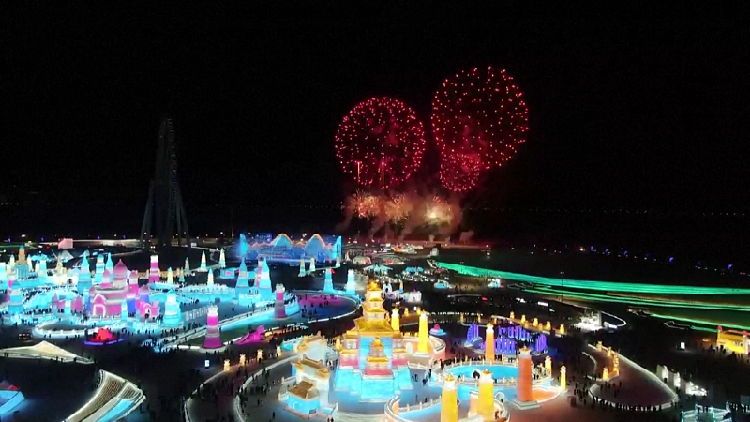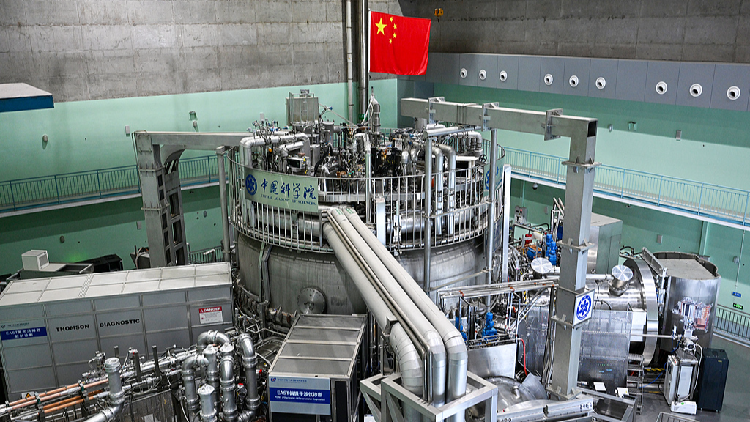How can we maintain enthusiasm for culture and tourism across different regions?
How to sustain cultural and tourism consumption fervor across regions?

Editor's note: Doctor Wu Fenglin, Director of the Planning and Leisure Research Institute, China Tourism Academy. The article reflects the authors' opinions and not necessarily the views of CGTN. It has been translated from Chinese and edited for brevity and clarity.
During the three-day New Year's holiday in 2024, Harbin received a total of record-breaking 3.05 million visitors and registered an unprecedented tourism revenue of nearly six billion yuan. The spillover of tourism consumption further fueled the growth of local services such as catering, retail, performances, transportation, and communication. Consequently, investments poured into projects related to scenic areas, resorts, hotels, B&Bs (bed-and-breakfast), neighborhoods, and business districts, as well as the R&D (research and development), manufacturing, and sales of equipment linked to ice and snow-related leisure activities. A rational and systematic analysis is required to unravel the underlying logic of Harbin's booming ice and snow tourism and how other cities can draw inspiration from it for tourism development.
First, it is imperative to fortify the foundation. In the era of individual and independent travel, transportation infrastructure such as airports, high-speed railways, ports, subways, buses, taxis, and shared bicycles, along with public cultural services like museums, art galleries, libraries, science museums, cultural centers, and theaters, constitutes the underlying logic of a city’s competitiveness in tourism. For a long time, we have been accustomed to building tourist cities with natural, historical, and cultural resources, hoping to attract visitors through the internet and new social platforms. Even directors of culture and tourism bureaus have turned themselves into "internet celebrities". However, no singular trick is sufficient to address the challenge of transforming "internet celebrities" into enduring popularity. Harbin has demonstrated remarkable intelligence and patience in the development of ice and snow tourism infrastructure, providing convenient infrastructure and comprehensive public services for both incoming tourists and local residents.
Second, it is imperative to follow the trend and fully capitalize on the ice and snow dividends. In the 2022-2023 season, which is the first ice and snow season after the Beijing Winter Olympics, the national ice and snow leisure tourism attracted 312 million tourists, with a market scale exceeding 300 million tourists for two consecutive seasons. Surveys show that 66.2 percent of tourists aspire to experience ice-and-snow leisure tourism activities in the 2023-2024 ice and snow season. Among them, 42 percent wish to engage in long-distance ice and snow tourism, 54.1 percent plan to increase or maintain their expenditure on ice and snow tourism during this season, and 64.8 percent intend to boost the frequency of ice and snow leisure travels. These statistics fully reflect tourists' strong confidence and willingness to consume in long-distance ice and snow tourism and short-distance ice and snow leisure activities.
The three-year pandemic has had a profound impact on China's tourism industry. The vibrant scenes of holiday tourism in 2023 and the Zibo barbecue that has drawn national attention show us the hustles and bustles on the earth, which are, in fact, a torrent of emotions. On a monthly basis, the release of tourist emotions diminishes over time. Tourists turned rational in the second half of 2023. However, if analyzed by season, each season presents its unique tourism demands. Only when the winter tourism demand that has been suppressed for three years is fully liberated can the so-called emotional release truly be completed, and the tourism pattern will genuinely revert to its normal. The ongoing ice and snow season in Harbin and Zibo barbecue at the end of spring and the beginning of summer share similar origins.
Next, the assistance from dissemination should not be underestimated. Traditional tourism promotion, predominantly reliant on "roadshows", has progressively been marginalized by the market. Emerging media channels with high stickiness among young groups assume an increasingly important role in tourism promotion, becoming the primary conduits most likely to swiftly cultivate tourism hotspots. In particular, when adorned with sweet monikers like "Little Potato", the cute image of "Little Sugar Orange", the genial charm of "Sliced Frozen Pears", and the patriotic sentiment of "Visiting the Unit 731 Museum", the emotions that the Chinese people may not naturally articulate are stirred and unraveled, unleashing an irresistible inner power for promotion.
Characteristics and Trends in Urban Tourism Development
1. The development of destinations requires fully leveraging cities' strategic support role. More and more European cities perceive the tourism industry as the pillar industry of the urban economy. Renowned tourist cities like London, Paris, and Barcelona are even more famous than the countries they are located in, evolving into significant magnets for attracting tourists. Cities play pivotal roles as both tourist source areas and destinations. Data underscores that urban residents' tourism consumption contributes 70 percent of the total, and more than 70 percent of tourists travel to cities and towns. At the same time, cities serve as centers of tourism services and distribution. Cities function as hubs for air, rail, road, sea, and river transportation, offering highly developed commercial and public services. In terms of spatial patterns, tourism flows within and between urban clusters act as nodes in the mainline and branch line of the network of national tourism flow, serving as central carriers for reconstructing tourist source areas and destinations and the key to the high-quality development of the tourism industry.
2. Tourist demand undergoes a diversification and layering process, which is the focal point of urban tourism. The continuous emergence of new tourism demands and segmented markets has driven the creative improvement and innovative development of tourism scenarios, products, and services. Research reveals that special forces-style tourism, stamp collection excursions, check-in activities, Zibo barbecue, tea-boiling over the stove with charcoal fire, city walks, study tours, summer retreats, winter escapes, wellness tourism, self-driving tours, and leisure vacations coupled with sojourns have all become tourism buzzwords this year. There is a growing demand for in-depth, localized experiences like "flying to a city and staying there for a week".
3. Continuously expanded and increasingly upgraded tourism demands are steering innovation in the business forms of the tourism industry. Tourism is a way of life, learning, and growth. Tourists anticipate experiencing not only the magnificent views of destinations but also the beautiful life conveyed through elements like cuisine, architecture, and culture. Tourism development planning and project construction are transitioning from tourism destinations such as scenic areas, resorts, star-rated hotels, airports, and high-speed railways to new spaces of beautiful life, from food markets to theaters, that the hosts and guests both share.
(Cover via CFP)
CL TROIB News












